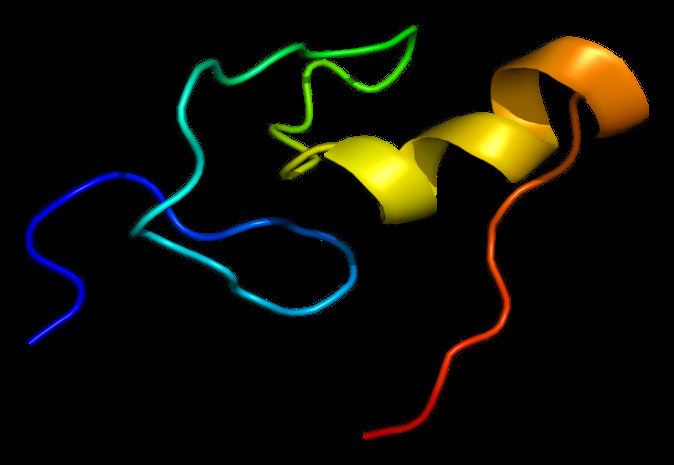Species Human Entrez 2623 | Human Mouse Ensembl ENSG00000102145 | |
 | ||
Aliases GATA1, ERYF1, GATA-1, GF-1, GF1, NF-E1, NFE1, XLANP, XLTDA, XLTT, GATA binding protein 1 External IDs OMIM: 305371 MGI: 95661 HomoloGene: 1549 GeneCards: GATA1 | ||
Erythroid transcription factor also known as GATA-binding factor 1 or GATA-1 is a protein that in humans is encoded by the GATA1 gene.
Contents
GATA-1 is a member of the GATA transcription factor family and is a key mediator of the development of specific types of blood cells from their precursor cells, termed hematopoietic progenitors or precursors. This protein plays a role in erythroid development by regulating a large ensemble of genes that mediate both the development and function of red blood cells. Critical functions in the developing red blood cell (erythroblast) include the establishment of the erythroid cytoskeleton, enzymes that mediate heme biosynthesis, and polypeptide chains that constitute the hemoglobin tetramer. Mutations in the gene encoding GATA-1 have been associated with X-linked dyserythropoietic anemia and thrombocytopenia.
Function
GATA1 is required for the maturation of red blood cells, megakaryocytes, mast cells and eosinophils. GATA1 mutant mice die in early embryonic development due to inability to form mature erythroid cells. GATA1 mutation in humans causes congenital anemias and thrombocytopenias.
GATA1 was first described as a red blood cell lineage transcription factor that activates the beta-globin gene. During red blood cell maturation, GATA1 activates nearly all erythroid-specific genes while silencing genes associated with the immature proliferative red blood cell precursor cells (erythroblasts). Genome-wide studies have provided evidence that GATA1 activates and represses a large number of genes. Many questions remain unanswered regarding the function of a large number of genes. By contrast, other GATA-1 target genes have established activities to control fundamental cell biological functions, including machinery that controls the ability of erythroid precursor cells to proliferate and proteins that control the capacity of the erythroid precursor cell to remodel its organelles such as mitochondria, proteins that control the RNA content of the erythroid precursor cell, and proteins that control signal transduction networks that orchestrate the many dynamic transitions of the developing erythroid precursor.
Structure
The GATA-1 protein contains multiple functional domains including the C-finger, the N-finger, and N-terminal sequences that have been suggested to constitute a transcriptional activation domain. The C-finger, named for being near the C-terminal, mediates Zinc finger sequence-specific DNA binding. The primary function of the N-finger, named for being near the N-terminal is binding to a cofactor named FOG1 (friend of GATA), although it has also been implicated in binding to naked DNA (DNA studied in the test tube that is not assembled into chromatin). The gene for GATA1 is on the X-chromosome.
Disease linkage
Mutations in GATA1 cause anemias and thrombocytopenia in human patients. Disease-causing GATA1 mutations are present in the zinc finger DNA binding domains as well as protein-protein interaction domains of GATA1.
Mutations in exon 2 of the GATA1 gene are present in almost all cases of Down syndrome (DS)-associated acute megakaryoblastic leukemia (AMKL). While AMKL is typically associated with the (1;22) translocation and expression of a mutant fusion protein, the genetic alterations that promote individuals with DS-AMKL are related to the GATA1 mutations, and the formation of a truncated transcription factor (GATA1s).
The same mutations in exon 2 of GATA1 present in almost all Down Syndrome-associated transient myeloproliferative disorder (TMD) or transient leukemia (TL), a precursor condition that evolves into AMKL in 30% of patients, that as many as 10% of Down Syndrome children may develop. The incidence for the GATA1 mutation in about 4% of Down Syndrome patients, but less than 10% of those with the mutation developed AMKL. This mutation is present in the fetus, suggesting an early role in leukemogenesis. In addition to screening for TL, a GATA1 mutation at birth might serve as a bio-marker for an increased risk of DS-related AMKL.
Interactions
GATA1 has been shown to interact with several proteins - either directly by binding the protein or indirectly (functional interaction without direct binding).
